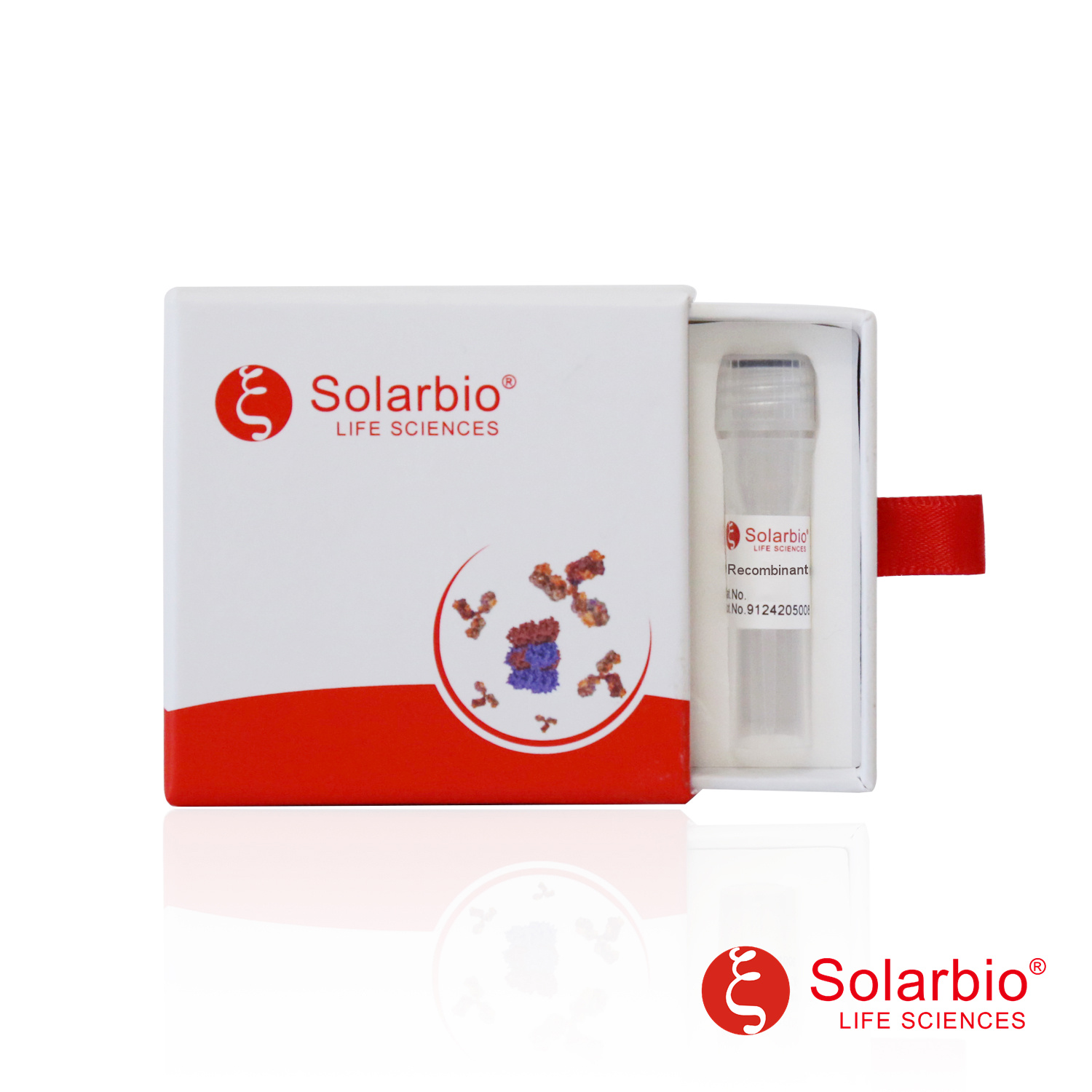| Gene Name |
RPS6KB1 |
| Synonyms |
PS6K;S6K;S6K-beta-1;S6K1;STK14A;p70 S6KA;p70(S6K)-alpha;p70-S6K;p70-alpha |
| English Name |
Recombinant human RPS6KB1 protein |
| Full Name |
ribosomal protein S6 kinase,70kDa,polypeptide 1 |
| Chinese Name |
核糖体蛋白S6激酶,70kDa,多肽1 |
| Appearance |
Powder: Lyophilized from a 0.2 μm filtered solution of 2-8M Urea, 20mM Tris-HCl, 150mM NaCl, 1mM DTT, PH7.2-8.0. |
| Purity |
≥85% by SDS-PAGE. |
| Storage |
Reconstituted protein solution can be stored at 4-7℃ for 1-2 weeks, stored at < -20℃ for 1 year. |
| Transport Condition |
The product is shipped at -20℃ temperature. Upon receipt, store it immediately at the temperature listed below. |
| Concentration |
1mg/ml by SDS-PAGE. |
| Swiss Prot |
P23443 |
| Gene ID |
6198 |
| Reactivity |
Human Mouse Rat (Bovine Rabbit) |
| Molecular Weight |
59kDa |
| Interval Range |
1-350AA |
| Background |
Serine/threonine-protein kinase that acts downstream of mTOR signaling in response to growth factors and nutrients to promote cell proliferation, cell growth and cell cycle progression. Regulates protein synthesis through phosphorylation of EIF4B, RPS6 and EEF2K, and contributes to cell survival by repressing the pro-apoptotic function of BAD. Under conditions of nutrient depletion, the inactive form associates with the EIF3 translation initiation complex. Upon mitogenic stimulation, phosphorylation by the mammalian target of rapamycin complex 1 (mTORC1) leads to dissociation from the EIF3 complex and activation. The active form then phosphorylates and activates several substrates in the pre-initiation complex, including the EIF2B complex and the cap-binding complex component EIF4B. Also controls translation initiation by phosphorylating a negative regulator of EIF4A, PDCD4, targeting it for ubiquitination and subsequent proteolysis. Promotes initiation of the pioneer round of protein synthesis by phosphorylating POLDIP3/SKAR. In response to IGF1, activates translation elongation by phosphorylating EEF2 kinase (EEF2K), which leads to its inhibition and thus activation of EEF2. Also plays a role in feedback regulation of mTORC2 by mTORC1 by phosphorylating RICTOR, resulting in the inhibition of mTORC2 and AKT1 signaling. Mediates cell survival by phosphorylating the pro-apoptotic protein BAD and suppressing its pro-apoptotic function. Phosphorylates mitochondrial URI1 leading to dissociation of a URI1-PPP1CC complex. The free mitochondrial PPP1CC can then dephosphorylate RPS6KB1 at Thr-412, which is proposed to be a negative feedback mechanism for the RPS6KB1 anti-apoptotic function. Mediates TNF-alpha-induced insulin resistance by phosphorylating IRS1 at multiple serine residues, resulting in accelerated degradation of IRS1. In cells lacking functional TSC1-2 complex, constitutively phosphorylates and inhibits GSK3B. May be involved in cytoskeletal rearrangement through binding to neurabin. Phosphorylates and activates the pyrimidine biosynthesis enzyme CAD, downstream of MTOR. Following activation by mTORC1, phosphorylates EPRS and thereby plays a key role in fatty acid uptake by adipocytes and also most probably in interferon-gamma-induced translation inhibition. |
| Application |
Immunology research |
| Source |
E.coli |
| Purification Method |
NI-NTA affinity purification |
| Solvent |
Reconstituted protein solution can be diluted with distilled water. Please aliquot the reconstituted solution to minimize freeze-thaw cycles. (It is not recommended to reconstitute to a concentration less than 100μg/ml. Dissolve the lyophilized protein in distilled water.) |
| Endotoxin |
Not measured |
| Biological Activity |
N0 |
| Lable Information |
With a 6×His tag at the N/C-terminus. |
| Unit |
Piece |
| Specification |
10ug 50ug 100ug 1mg |


 English
English
 中文
中文

 Manual Download
Manual Download

